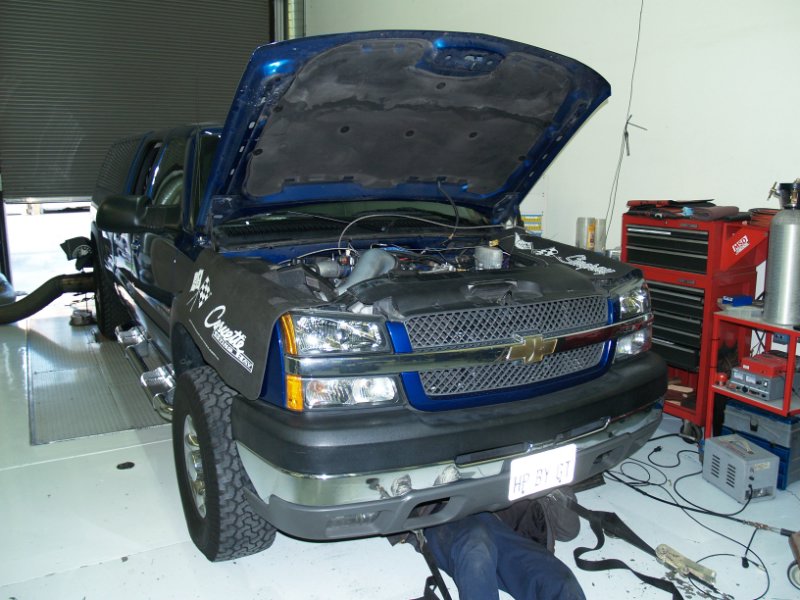
Big Shot Of Power
By: Cam Benty
Photos By: Cam Benty

It would seem to be an odd combination – nitrous oxide and diesel, one word synonymous with high performance, the other known for more traditional work duties where supreme torque, power and durability were desired. But more and more diesel truck owners are asking their trucks to do more than tow the family boat – they are asking them to perform. In keeping with the trend, more diesel-powered trucks are running nitrous oxide to wake up the performance and make them faster. ZEX recently introduced a true nitrous system kit for diesel engines. Not a Propane Injection system as has become so common, but a real live nitrous oxide injection system featuring many of the same safety and engineering features found with the company’s other nitrous oxide injection products. Best of all, the system improves power without additional tuning from stock. The reason is simple. The nitrous oxide aids in a more thorough burn of the excess diesel fuel entering the engine. This efficiency increases power, reduces exhaust gas temperatures and lowers excessive exhaust smoke. Turbo lag then becomes a faint memory.
The ZEX Diesel Nitrous System greatly cools the inlet air temperature generating the maximum amount of air density and power. If used in tandem with the FAST-FLASH diesel Power Programmer, to increase the fuel entering the engine, even more power can be generated – or so the theory goes. We were about to find out. ZEX’s Diesel Nitrous System includes everything you need for a complete installation on your truck, including a signature ZEX purple 10-lb. nitrous bottle, bottle brackets, programmable control module, Solenoid as well as all the plumbing and electrical connectors. With instructions available in the kit, as well as online, we were well versed in the installation process before heading to the garage.
The Vehicle
Our diesel truck of choice for the installation was a 2002 Chevy 6.6-liter Duramax Diesel. The vehicle came to us with 72,000 miles on the odometer, a well broken in and highly maintained truck to be sure. Our test vehicle had received a few performance “upgrades” but for our testing it was returned to the stock computer calibration. With diesel engines, the more fuel present, the more power it makes. Nitrous helps to burn every bit of this extra fuel and turns it into horsepower – to a limit. ZEX engineers say that once all the excess fuel is burned, any residual nitrous can decrease performance. Therefore it makes sense not to add too much and additional computer tuning is the key to preventing this. To achieve really big horsepower increases, additional fuel along with the nitrous has to be added. For this purpose, a FAST-FLASH power programmer would be required. To demonstrate this, tests in both stock and modified form would be conducted. The jets supplied with our system would allow complete control of the nitrous intake to the engine. In total, eight different jets are included with the system ranging from a 35 horsepower jet (#26-small) to 200 horsepower jet (#105-large). We decided to start our test with the smallest jet and see at what point the engine would cease to make more horsepower. Then we would begin to increase nitrous jet size while adding more diesel fuel through engine’s computer to make the really big horsepower gains.
The Installation
The most intricate part of the installation involved sorting out the wiring in the vehicle’s electrical system . . . . which really isn’t that hard. Only three wires were required for hook-up. A ground wire, 12-volt power source and the TPS sensor wire. The ZEX Diesel Nitrous system activates electronically, only when armed and when the throttle is wide open. We tapped into a 12-volt power source through the fuse box and the ground wire was added to a main ground junction underhood. An arming switch was mounted in the cab to provide ultimate control. The factory TPS wire is located in a bundle under the hood and was easy to reach. With the TPS wire attached and the system armed, we programmed the control module to read wide-open throttle by depressing the throttle for 10 seconds. The ZEX system does the rest, an amazingly simple procedure. Following the instructions for installation of the plumbing was relatively easy after we determined where to place the bottle. The owner opted to place the bottle outside of the cab to be able to skip the step of having to vent the bottle to the outside as would be required for safety.
Big Power
In our testing we learned several things. First, the standard “tuned” state of the Duramax engine is fairly clean in order to make EPA standards. Adding nitrous to the stock tune will increase power some, but the big power gains we are looking for will come once we’ve added more fuel with a power programmer. We baselined the truck at 274 rear wheel horsepower, without the nitrous. With our nitrous system set to 35 hp (using the #26 jet), we achieved 282 hp, an additional eight rear-wheel horsepower. This tells us there is very little excess fuel for the nitrous to burn. Our next test was to reprogram the engine computer with the FAST-FLASH Power Programmer. This would increase the power and take advantage of other improvements the truck had installed, such as larger intake and exhaust plumbing. With the retuned computer, the truck made 469 hp to the wheels. Now that we had a new baseline to go off of, we then installed the 150 hp jet (#72) in our nitrous system and made another pull. Our engine picked up an additional 113 hp at the rear Wheels for a total of 581 hp. Not bad for a second attempt, delivering real power we could feel. Going to an even bigger jet netted a loss of power, telling us that we had burned up all the excess fuel. Before any further power gains could be seen, additional fuel would have to be added. The big power finale came when we swapped out the FAST-FLASH modified factory computer with a specially re-programmed off-road performance ECU. With this new computer, without the nitrous, our truck made 501 hp to the wheels. Making another dyno pull with the nitrous set to the 175 hp setting (#88 jet), the engine made and astounding 628 hp, a 127 hp gain. More impressive than that, the engine made 1324 ft. lbs of torque. Our dyno testing taught us that diesels make more power and torque than gasoline engines with far fewer enhancements. They can be taught to work with nitrous with no ill effects. In fact, they seem to like it. For those looking to make big horsepower with limited modifications and still have the daily reliability they require from their trucks, a stand-alone nitrous system is a great way to get there. Sidebar: Tale of the tape Six pulls to big power (All tests performed at Westech Performance in Mira Loma, CA) HP Torque (ft. lbs.) Stock baseline – no nitrous 274.0 478.4 Stock - 35 shot nitrous 282.3 492.5 FAST-FLASH Reprogrammed ECU – No Nitrous 469.1 1081.7 FAST-FLASH Reprogrammed ECU – 150 shot nitrous 581.1 1164.9 Special off-road ECU – No Nitrous 501.9 1118.3 Special off-road ECU – 175 shot nitrous 628.4 1323.8
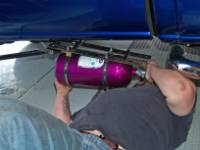
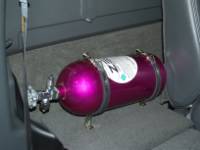
First step in the installation process is to determine exactly where everything goes and familiarizing yourself with the electrical systems of your vehicle. For our purposes, we had decided to place the ZEX nitrous bottle under the bed just back of the cab in the fenderwell. We could have opted for placing the nitrous bottle behind the rear seat but decided not to at the suggestion of the vehicle owner. If the bottle is placed inside the cab, it must be vented to the outside for safety reasons.
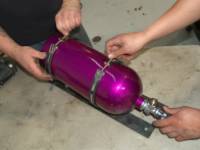
Index the pickup tube in the bottle in the right position so that it draws properly from the tank. Always mount your bottle so that as your vehicle accelerates, the liquid flows towards the pick up tube. In our case, we actually built a mount to attach the bottle brackets and make certain that the bottle is securely bolted in place.
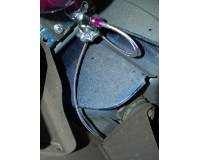
Route the nitrous delivery line under the vehicle in such as way that it will not come in contact with debris thrown up by the tires. The delivery line can be held to the frame with wire ties supplied in the kit
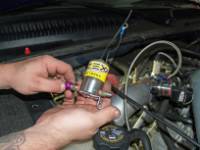
Next we mounted the nitrous solenoid under the hood to the firewall using the supplied brackets. The solenoid fittings are clearly labeled. We incorporated the solenoid ground wire into the mounting of the solenoid at the bracket mounting point. Make certain you have a good ground clear of paint and other debris.
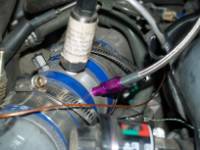
As noted in the instructions, optimum placement for the nitrous oxide nozzle is 6 to 18 –inches away from the opening for the intake manifold. In our case, the truck has been modified with a coupler in the intake tube that was perfect for the nozzle mount.
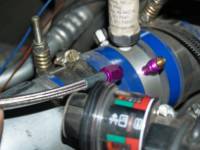
A fitting, supplied with the kit, allows you to install the nozzle in the intake air charge elbow. If the air charge pipe is metal, drill it with a 1/4-inch drill bit and tap it with the supplied 1/16 NPT thread tap. If the charge pipe is rubber you can drill it out with a 7/16th-inch drill and install a bulkhead fitting (supplied in the kit).
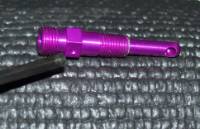
The nitrous nozzle is marked with a dimple that notes the position of the nozzle opening. The outlet should face in the direction of the intake manifold.
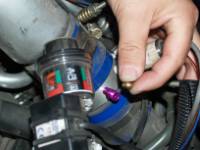
Next attach the nitrous jet in the nozzle for the desired power level and attach the two foot -3 AN nozzle feel line between the nozzle and the solenoid. The jets come in various power sizes and we started with the smallest #26 jet to check out system and set a baseline from which to build. Don’t forget to attach the -4 AN delivery line from the nitrous bottle.
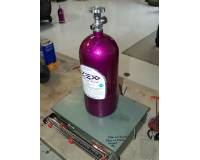
The professionals at Westech Performance – our nitrous installation experts, completed filling the bottle with 10 lbs of fresh nitrous
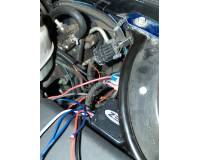
On the electrical side we mounted the control module on the fender panel and began running the wires to the appropriate locations – ground, 12-volt power with the key on and TPS.
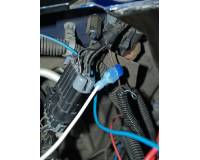
The TPS wire was part of this bundle. We connected it in this manner
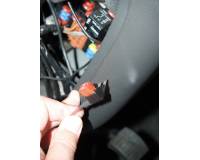
The 12-volt power source was reached through the fuse box.
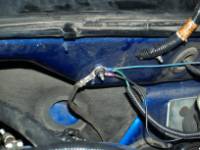
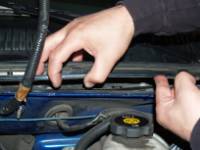
The ground wire was attached in this manner to the firewall.
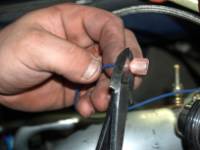
The solenoid wire was run through a conduit in the engine compartment and a quick disconnect fitting was used to make it easy to cut power to the solenoid if desired. We also considered running the wire under the cowl as noted here which makes for a tidy installation.
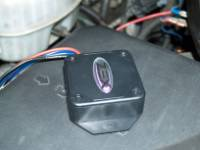
The ZEX Diesel Nitrous system includes an amazing electronic activation module that learns your vehicle’s electrical system. With the key on and the system armed, the driver depresses the throttle to the floor for 10 seconds. The system learns the power output of the TPS switch and sets itself to open at wide-open throttle.
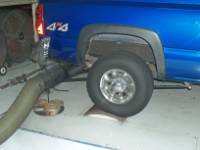
Our stock dyno baseline was 274hp at the rear wheels and 478 ft. lbs of torque
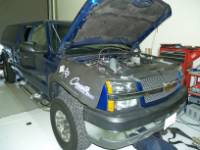
With the system outfitted with the 35hp (#26) jets, we saw an increase of approximately 8 horsepower at the tire and 14 ft. lbs of torque. It was clear that the system required more fuel to net the real potential of the ZEX Diesel Nitrous System.
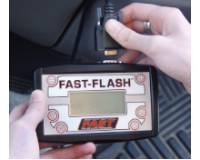
We reprogrammed the computer with an aggressive fuel curve. A FAST-FLASH Power Programmer is terrific for this purpose. Our engine was equipped with a number of horsepower enhancements that now came into play. Baseline without nitrous – 469 hp and a stunning 1081 ft. lbs of torque - nearly twice the stock number. The engine emitted a great deal of black smoke – a very rich condition
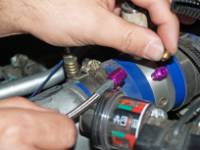
Next we moved the nitrous system up to the 150hp setting (#72 jet). Peak power, with less smoke, was 581 horsepower and 1092 ft. lbs of torque. After refilling the nitrous bottle we installed the largest jet, #105 and ran it again with the reprogrammed computer. The result was surprising – we had run dry of excess fuel and power tapered off.
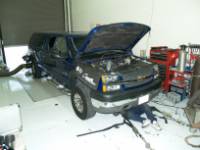
Power mad and anxious to see what we could achieve, we moved to a very aggressive ECU featuring unique programming and moved back to the ZEX 175hp jet. Baseline power – 501 hp and 1,118 ft. lbs of torque. We again loaded up the truck on the Westech chassis dyno and recorded 1324-lbs.-ft. of torque at the tire and 628 horsepower.